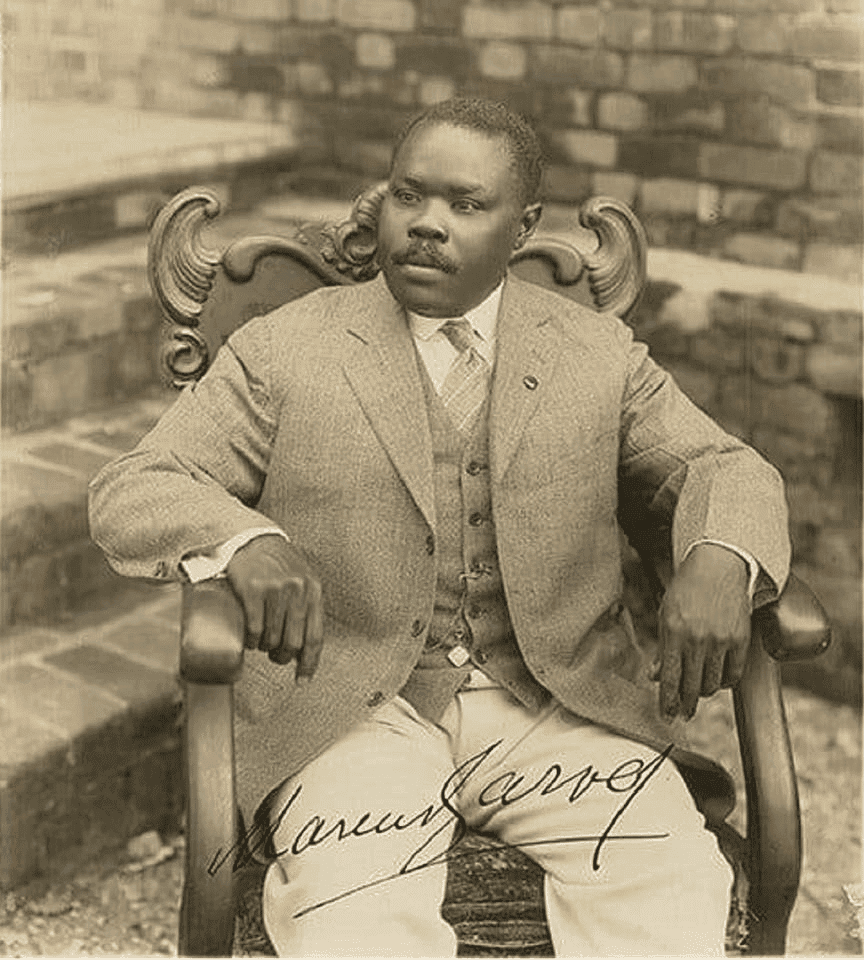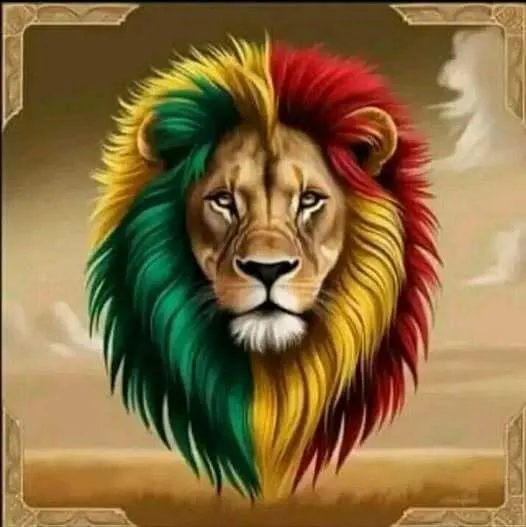Africa, African Histor
TheEthiopian Empire(Ge’ez:መንግሥተ ኢትዮጵያ,romanized:Mängəstä Ityop’p’ya,lit.‘Government of Ethiopia’), also formerly known by the exonymAbyssinia(derived from the Arabical-Habash), or just simply known asEthiopia(/ˌiːθiˈoʊpiə/; Amharic and Tigrinya: ኢትዮጵያʾĪtyōṗṗyā,![]() listen(help·info), Oromo: Itoophiyaa, Somali: Itoobiya, Afar:Itiyoophiyaa),was a monarchy that spanned a geographical area in the current states of Ethiopia and Eritrea. It began with the establishment of the Solomonic dynasty by Yekuno Amlak from approximately 1270 and lasted until 1974, when Emperor Haile Selassie was overthrown in a coup d’état by the communist Derg. Throughout much of its existence, it was surrounded by hostile forces in the African Horn; however, it managed to develop and preserve a kingdom based on its ancient form of Christianity.
listen(help·info), Oromo: Itoophiyaa, Somali: Itoobiya, Afar:Itiyoophiyaa),was a monarchy that spanned a geographical area in the current states of Ethiopia and Eritrea. It began with the establishment of the Solomonic dynasty by Yekuno Amlak from approximately 1270 and lasted until 1974, when Emperor Haile Selassie was overthrown in a coup d’état by the communist Derg. Throughout much of its existence, it was surrounded by hostile forces in the African Horn; however, it managed to develop and preserve a kingdom based on its ancient form of Christianity.

Founded in 1270 by the Solomonic Dynasty nobleman Yekuno Amlak, who claimed to descend from the last Aksumite king and ultimately the Biblical Menelik I and the Queen of Sheba, it replaced the Agaw kingdom of the Zagwe. While initially a rather small and politically unstable entity, the Empire managed to expand significantly under the crusades of Amda Seyon I (1314–1344) and Yeshaq I (1414–1429), temporarily becoming the dominant force of the African Horn. Yeshaq’s reign was however challenged by Sultan Jamal ad-Din II which led to Yeshaq’s death.Under the rule of Zara Yaqob (1434–1468), the Hadiya Sultanate was invaded by Ethiopia and the captured Hadiya princess Eleni converted to Christianity leading to her marriage to Zara Yacob.Muslims in the region as well as Adal Sultanate rejected the marriage alliance and repeatedly invaded Ethiopia, finally succeeding under Imam Mahfuz. Mahfuz’s ambush and defeat by Emperor Lebna Dengel brought about the early 16th-century Jihad of the Adalite Imam Ahmed Gran, who was only defeated in 1543 with the help of the Portuguese.[16]Greatly weakened, much of the Empire’s southern territory and vassals were lost due to the Oromo migrations. In the north, in what is now Eritrea, Ethiopia managed to repulse Ottoman invasion attempts, although losing its access to the Red Sea to them.
Reacting to these challenges, Ethiopia started to expand westwards, conquering the Lake Tana area and much of Beta Israel territory in Begemder. In the 1630s Emperor Fasilides founded the new capital of Gondar, marking the start for a new golden age known as “Gondarine period”. It saw relative peace, the successful integration of the Oromo and a flourishing of culture. With the deaths of Emperor Iyasu II (1755) and especially Iyoas I (1769) the realm eventually entered a period of decentralization, known as “Era of the Princes”. The Shewa region de facto seceded and constituted a kingdom of its own, while within the Empire, regional warlords contested for power, with the emperor being barely more than a mere puppet.
Emperor Tewodros II (r. 1855–1868) put an end to that state, reunified the Empire and led it into the modern period before dying during the British Expedition to Abyssinia. His successor Yohannes IV engaged primarily in war and successfully fought the Egyptians and the Mahdists before dying against the latter in the Battle of Gallabat in 1889. Emperor Menelik II, now residing in the recently founded town of Addis Ababa, continued and concluded the policy of expansion of his predecessor, subjugating many people and kingdoms in what is now western, southern, and eastern Ethiopia, like Kaffa, Welayta, Aussa, and Somali people. Thus, by 1898 he gave Ethiopia the geographical extent it has today. In the north, he was confronted with an expanding Italy. Decisively defeating it at the Battle of Adwa in 1896 using imported modern weapons, Menelik ensured Ethiopia’s independence and confined Italy to Eritrea.
Later, after the Second Italo-Ethiopian War, Mussolini’s Italian Empire occupied Ethiopia and established the Italian East Africa, merging it with neighboring Eritrea and the Italian Somaliland colony to the south-east. After World War II, the Italians were driven out of Ethiopia with the help of the British army. The emperor returned from exile and the country was one of the founding members of the United Nations, and in 1962 annexed Eritrea. However, the Ethiopian Civil War, domestic discontent, and the independence war of Eritrea led to the fall of the Empire in 1974.
By 1974, Ethiopia was one of only three countries in the world to have the title of Emperor for its head of state, together with Japan and Iran under the Pahlavi dynasty. It was the second-to-last country in Africa to use the title of Emperor, as after it came the short-lived Central African Empire, which lasted between 1976 and 1979 under Emperor Bokassa I.
History
D’mt and Kingdom of Aksum
Human occupation in Ethiopia began early, as evidenced by the findings. According to the Kebra Nagast, Menelik I founded the Ethiopian empire in the 10thcentury BC. In the 4thcentury, under King Ezana of Axum, the kingdom adopted Christianity as the state religion that evolved into the Orthodox Tewahedo (Ethiopian Orthodox and Eritrean Orthodox) denominational Church. It was thus one of the first Christian states.
After the conquest of Aksum by Queen Gudit or Yodit, a period began which some scholars refer to as the Ethiopian Dark Ages.According to Ethiopian tradition, she ruled over the remains of the Aksumite Empire for 40 years before transmitting the crown to her descendants.In 1063AD the Sultanate of Showa describes the passing of their overlord Badit daughter of Maya.
Makhzumi and Zagwe dynasty
The earliest Muslim state in Ethiopia, the Makhzumi dynasty with its capital in Wahal, Hararghe region succeeds Queen Badit. The Zagwe kingdom, another dynasty with its capital at Adafa, emerged not far from modern-day Lalibela in the Lasta mountains.The Zagwe continued the Orthodox Christianity of Aksum and constructed many rock-hewn churches such as the Church of Saint George in Lalibela. The dynasty would last until its overthrow by a new regime claiming descent from the old Aksumite kings.
Solomonic dynasty and Ifat Sultanate
An unholy alliance between Muslim and Christian states had occurred in this period.In 1270, the Zagwe dynasty was overthrown by a rebel named Yekuno Amlak claiming lineage from the Aksumite kings and, hence, from Solomon. Yekuno Amlak successfully received massive aid from the Muslim Sultanate of Shewa against Zagwe.The eponymously named Solomonic dynasty was founded and ruled by the Abyssinians, from whom Abyssinia gets its name. In 1279 the deposed Sultan of Shewa Dil Marrah successfully appealed to Yekuno Amlak to restore his rule, however it wouldn’t last long, because its renegade province Ifat would eventually invade it and create the Ifat Sultanate. During the Ifat Sultanate, Muslim relations with the Solomonic dynasty soured. In the 14th century, Emperor Amda Seyon would invade Ifat and essentially dismantle it as a regional power.Ifat’s descendants would return to the Horn of Africa and launch a powerful regional state, the Adal Sultanate.
Adal Sultanate invasion
In 1529, the Adal Sultanate’s forces led by Ahmad ibn Ibrahim al-Ghazi invaded the Ethiopian Empire in what is known as the Ethiopian–Adal war. The Adal occupation lasted fourteen years. During the conflict, the Adal Sultanate employed cannons provided by the Ottoman Empire. In the aftermath of the war, Adal annexed Ethiopia, uniting it with territories in what is now Somalia. In 1543, with the help of the Portuguese Empire, the Solomonic dynasty was restored.
Early modern period
In 1543, Emperor Gelawdewos beat Ahmad ibn Ibrahim al-Ghazi armies and Ahmad himself was killed at the Battle of Wayna Daga, close to Wegera. This victory allowed the empire to reconquer progressively the Ethiopian Highlands.In 1559 Gelawdewos was killed attempting to invade Adal Sultanate, and his severed head was paraded in Adal’s capital Harar.
 Dawit II of Ethiopia (Lebna Dengel), Emperor of Ethiopia (nəgusä Nagast) and member of the Solomonic dynasty
Dawit II of Ethiopia (Lebna Dengel), Emperor of Ethiopia (nəgusä Nagast) and member of the Solomonic dynastyThe Ottoman Empire made another attempt at conquering Ethiopia, from 1557, establishing Habesh Eyalet, the province of Abyssinia, by conquering Massawa, the Empire’s main port, and seizing Suakin from the allied Funj Sultanate in what is now Sudan. In 1573 Sultanate of Harar attempted to invade Ethiopia again however Sarsa Dengel successfully defended the Ethiopian frontier.
The Ottomans were checked by Emperor Sarsa Dengel’s victory and sacking of Arqiqo in 1589, thus containing them on a narrow coastline strip. The Afar Sultanate maintained the remaining Ethiopian port on the Red Sea, at Baylul.
Oromo migrations through the same period occurred with the movement of a large pastoral population from the southeastern provinces of the Empire. A contemporary account was recorded by the monk Abba Bahrey, from the Gamo region. Subsequently, the empire organization changed progressively, with faraway provinces taking more independence. A remote province such as Bale is last recorded paying tribute to the imperial throne during Yaqob reign (1590-1607).

Fasilides Palace
By 1607, Oromos were also major players in imperial politics, when Susenyos I, raised by a clan throughgudifacha(or adoption), took power. He was helped by fellow Luba age-group generals Mecha, Yilma and Densa, who were rewarded byRistfeudal lands, in the present-day Gojjam districts of the same name.Susenyos reign was also marked by his short-lived conversion to Catholicism, which ignited a major civil war. His son Fasilides I reverted the move.
The reign of Iyasu the Great (1682-1706) was a major period of consolidation. It also saw the dispatching of embassies to Louis XIV’s France and to Dutch India. During the reign of Iyasu II (1730-1755), the Empire was strong enough to undertake a war on the Sennar Sultanate, where the emperor leading its army to Sennar itself, was afterwards forced to retreat upon defeat along the Setit river. Iyasu II also conferred the dignity of Kantibai of the Habab (northern Eritrea) after homage by a new dynasty.
TheWalloandYejjuclans rise to power culminated in 1755, when Emperor Iyoas I ascended to the imperial throne in Gondar. They would be one of the major factions contending for imperial power during the ensuing Zemene Mesafint, starting from 1769, when Mikael Sehul, Ras of Tigray killed Iyoas I and replaced him with Yohannes II.
The Early Modern period was one of intense cultural and artistic creation. Notable philosophers from that area are Zera Yacob and Walda Heywat. The city of Gondar became the capital in 1636, with several fortified castles built in the town and in its surrounding areas.
Princes’ Era
From 1769 to 1855, the Ethiopian empire passed through a period known as thePrinces Era(in AmharicZemene Mesafint). This was a period of Ethiopian history with numerous conflicts between the various Ras (equivalent to the English dukes) and the emperor, who had only limited power and only dominated the area around the contemporary capital of Gondar. Both the development of society and culture stagnated in this period. Religious conflict, both within the Ethiopian Orthodox Church and between them and the Muslims were often used as a pretext for mutual strife. The Princes Era ended with the reign of the Emperor Tewodros II.
Reign of Emperor Tewodros II and Scramble for Africa
In 1868, following the imprisonment of several missionaries and representatives of the British government, the British engaged in the Punitive Expedition to Abyssinia. This campaign was a success for Britain and the Ethiopian emperor committed suicide.
From 1874 to 1876, the Empire expanded into Eritrea, under Yohannes IV king of Tembien, whose forces led by Ras Alula won the Ethiopian-Egyptian War, decisively beating the Egyptian forces at the Battle of Gundert, in Hamasien. In 1887 Menelik King of Shewa invaded the Emirate of Harar after his victory at the Battle of Chelenqo.
The 1880s were marked by the Scramble for Africa. Italy, seeking a colonial presence in Africa, was awarded Eritrea by Britain which led to the Italo-Ethiopian War of 1887–1889 and the scramble for Eritrea’s coastal regions between King Yohannes IV of Tembien and Italy. After the death of Emperor Yohannes IV, Italy signed a treaty with Shewa (an autonomous kingdom within the empire), creating the protectorate of Abyssinia.
Due to significant differences between the Italian and Amharic translations of the treaty, Italy believed they had subsumed Ethiopia as a protectorate, while Menelik II of Shewa repudiated the protectorate status in 1893. Insulted, Italy declared war on Ethiopia in 1895. The First Italo-Ethiopian War resulted in the 1896 Battle of Adwa, in which Italy was decisively defeated, as the Ethiopians were numerically superior, better equipped and supported by Russia and France. As a result, the Treaty of Addis Ababa was signed in October, which strictly delineated the borders of Eritrea and forced Italy to recognize the independence of Ethiopia.
Beginning in the 1890s, under the reign of Emperor Menelik II, the empire’s forces set off from the central province of Shoa to incorporate through conquest inhabited lands to the west, east and south of its realm.The territories that were annexed included those of the western Oromo (non-Shoan Oromo), Sidama, Gurage, Wolayta,and Dizi.Among the imperial troops was Ras Gobena’s Shewan Oromo militia. Many of the lands that they annexed had never been under the empire’s rule, with the newly incorporated territories resulting in the modern borders of Ethiopia.
Delegations from the United Kingdom and France – European powers whose colonial possessions lay next to Ethiopia – soon arrived in the Ethiopian capital to negotiate their own treaties with this newly-proven power.
Italian invasion and World War II
In 1935 Italian soldiers, commanded by Marshal Emilio De Bono, invaded Ethiopia in what is known as the Second Italo-Ethiopian War. The war lasted seven months before an Italian victory was declared. The Ethiopian Empire was incorporated into the Italian colony of Italian East Africa. The invasion was condemned by the League of Nations, though not much was done to end the hostility.
During the conflict, both Ethiopian and Italian troops committed war crimes. Ethiopian troops are known to have made use of Dum-Dum bullets (in violation of the Hague Conventions) and mutilated captured soldiers (often with castration).Italian troops used sulfur mustard in chemical warfare, ignoring the Geneva Protocol that it had signed seven years earlier. The Italian military dropped mustard gas in bombs, sprayed it from airplanes and spread it in powdered form on the ground. 150,000 chemical casualties were reported, mostly from mustard gas. In the aftermath of the war Italy annexed Ethiopia, uniting it with Italy’s other colonies in eastern Africa to form the new colony of Italian East Africa, and Victor Emmanuel III of Italy adopted the title “Emperor of Abyssinia”.
On 10 June 1940, Italy declared war on the United Kingdom and France, as France was in the process of being conquered by Germany at the time and Benito Mussolini wished to expand Italy’s colonial holdings. The Italian conquest of British Somaliland in August 1940 was successful, but the war turned against Italy afterward. Haile Selassie returned to Ethiopia from England to help rally the resistance. The British began their own invasion in January 1941 with the help of Ethiopian freedom fighters, and the last organized Italian resistance in Italian East Africa surrendered in November 1941, ending Italian rule.
Annexation of Eritrea (1952-1991)
At the request of Emperor Haile Selassie and the auspices of the newly formed United Nation led by Britain and the United States, the Italian colony of Eritrea was federated with Ethiopia by UN Resolution 390 (A). After fierce resistance, and the start of an armed rebellion in Eritrea, the Emperor decided to dismantle the federation and turned Eritrea into a semi-autonomous province of Ethiopia. The Eritrean war for liberation caused a string of events that led to the end of the Monarchy in 1974 and the topling of the DERG communist government in 1991, resulting in the liberation of Eritrea by the EPLF.
Fall of monarchy

Haile Selassie was the last Emperor of the Ethiopian Empire.
In 1974 a pro-Soviet Marxist–Leninist military junta, the “Derg”, led by Mengistu Haile Mariam, deposed Haile Selassie and established a socialist republic. Haile Selassie was imprisoned and died in unclear circumstances, a rumor being that he was suffocated with an ether-soaked pillow.
Society
According to Bahrey,there were ten social groups in the feudal Ethiopia of his time, i.e. at the end of the 16th century. These social groups consisted of the monks; the debtera; lay officials (including judges); men at arms giving personal protection to the wives of dignitaries and to princesses; the shimaglle, who were the lords and hereditary landowners; their farm labourers or serfs; traders; artisans; wandering singers; and the soldiers, who were called chewa. According to modern thinking, some of these categories are not true classes. But at least the shimaglle, the serfs, the chewa, the artisans and the traders constitute definite classes. Power was vested in the Emperor and those aristocrats he appointed to execute his power, and the power enforcing instrument consisted of a class of soldiers, the chewa
Military
From the reign of Amde Tseyon, Chewa regiments, or legions, formed the backbone of the Empire’s military forces. The Ge’ez term for these regiments is ṣewa (ጼዋ) while the Amharic term is č̣äwa (ጨዋ). The normal size of a regiment was several thousand men.Each regiment was allocated a fief (Gult), to ensure its upkeep ensured by the land revenue.
In 1445, following the Battle of Gomit, the chronicles record that Emperor Zara Yacoq started garrisoning the provinces with Chewa regiments.
| Name of regiment[45] | Region | Translation |
|---|---|---|
| Bäṣär waǧät | Serae, Dawaro, Menz, Gamo | Enemy of the waǧät |
| Ǧan amora | Dobe’a, Tselemt, Gedem | Eagle of the majesty |
| č̣äwa Bale | Bale | |
| č̣äwa Maya | Bahir Negash | |
| Bäṣur amora | Gamo | Spear of the eagle |
| Bäṣär šotäl | Damot | Spear of the foe |
Major divisions of the military were :
- Regiments at the court, under high court officials
- Regiments in the provinces, under regional Rases or other officials
- Regiments in border regions, or more autonomous provinces, such as Hadiya, Bahir Negash, Bale, under azmač who were military officials appointed by the king.
One of the Chewa regiments, known as theAbe Lahmin Geez, or theWeregenu, in Oromo, lasted, and participated to the Battle of Adwa, only to be phased out in the 1920s.
The modern army was created under Ras Tafari Makonnen, in 1917, with the formation of theKebur Zabagna, the imperial guard.

















